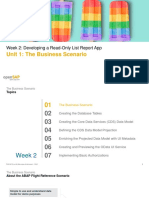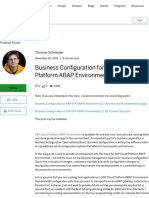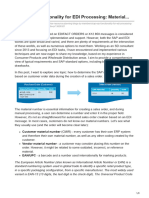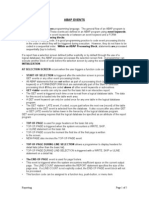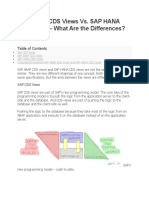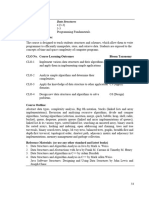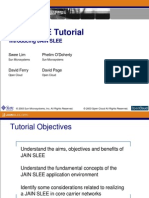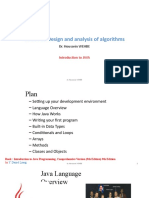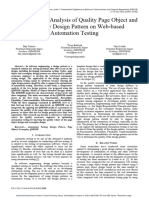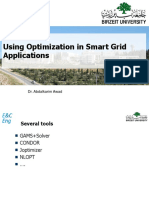Unit 1: Flow of an ABAP Program
Lesson Overview
In this lesson you will learn how a simple dialog program
is executed by the SAP NetWeaver Application Server.
�Business Example
You will learn the architecture of the SAP NetWeaver
Application Servers as well as the execution of ABAP
programs.
�System Architecture and ABAP
program
The SAP Web Application Server has a modular architecture that follows the
software-oriented client/server principle.
� The lowest level is the database level. Here data is
managed with the help of a relational database
management system (RDBMS). This data includes, apart
from application data, the programs and the metadata
that the SAP System requires for self-management.
� The ABAP programs run at the application server level,
that is, both the
applications provided by SAP and the ones you develop
yourself. The ABAP programs read data from the database,
process the data, and possibly store data.
� The third level is the presentation server level. This
level contains the user interface where each user can
access the program, enter new data, and receive the
results of a work process.
� ABAP programs are processed on the application server.
The design of user dialogs and database accesses is
of particular importance when writing application
programs.
� The user is only interested in:
how his or her business transaction flows
how data can be entered and output within the transaction.
The technical aspects of programming are less interesting
for the user.
To the average user, the SAP System is like a "Black Box".
� There are three different types of screens:
Standard screens
Selection screens
Lists.
Each type of screen provides different services to the
user.
�Runtime Architecture of a Program with Selection
Screen and List
� Whenever a user logs on to the system, a screen is
displayed. From this screen, the user can
start an ABAP program through the menu path.
�System Loads Program Context
The program context contains memory
areas for variables and complex data
objects, information on the screens for
user dialogs, and ABAP processing blocks.
The runtime system gets all this program
information from the Repository, which
is a special part of the database.
The sample program has a selection
screen as the user dialog, a variable and
a structure as data objects, and one ABAP
processing block. The list used to display
the data is created dynamically at
runtime.
�Runtime System Sends Selection
Screen
Since the program contains a
selection screen, the ABAP
runtime system sends it to the
presentation server. The
presentation server controls the
program flow for as long as the
user has not finished entering
data in the input fields.
Selection screens allow users to
enter selection criteria required
by the program for it to continue.
�Input Values Are Inserted into Data
Objects
As soon as the user has finished
entering data on the selection
screen, he or she can trigger further
processing of the program by
choosing Execute.
The entered data is automatically
placed in its corresponding data
objects in the program and the ABAP
runtime system resumes control of
processing.
The ABAP runtime system triggers
sequential processing of this ABAP
processing block.
�Program Requests Data Record from
Database
Read access to the database
is programmed in the ABAP
processing block.
Information about which
database table is accessed
and which row in the table is
read is passed to the
database.
�Database Returns Data Record to
Program
The database returns the
requested data record to the
program and the runtime
system ensures that this data
is placed in the appropriate
data objects.
�Runtime System Sends List
The layout of the subsequent
list display is programmed
into the processing block.
After its completion, the
runtime system sends this list
as a screen to the
presentation server .
�You should now be able to:
Describe the principles of the architecture of the SAP
NetWeaver ApplicationServer
Describe how a simple dialog program is executed by the
ABAP runtime system.



